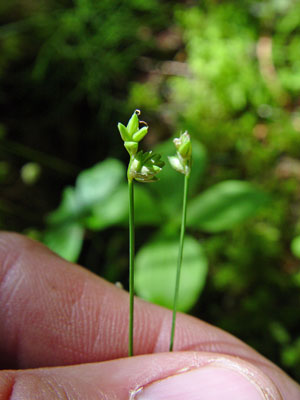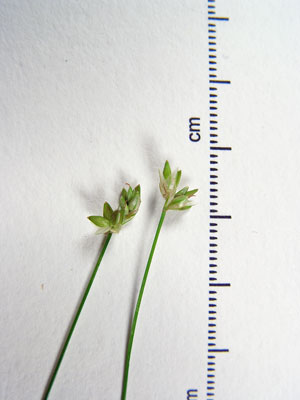DACF Home → Bureaus & Programs → Maine Natural Areas Program → Communities, Plants, and Animals → Rare Plants → Carex tenuiflora

Carex tenuiflora Wahlenb.
Sparse-flowered Sedge
- State Rank: S3
- Global Rank: G5
- State Status: Special Concern
Habitat: Bogs and mossy woods or pond margins, usually higher pH. [Forested wetland; Open wetland, not coastal nor rivershore (non-forested, wetland)]
Range: Newfoundland to Alaska, south to Maine, New York, and west to Alberta. In New England, this species has only been documented from Maine to Vermont.
Aids to Identification: Identification of species of the genus Carex is usually difficult and dependent upon rather technical characters. C. tenuiflora is in the section Glarosae. This section is characterized by gynecandrous spikes, cespitose habit, and short perigynia. This species is distinguished by the presence of 2-4 congested spikes bearing white hyaline floral scales.

Ecological characteristics: In Maine peatlands, this sedge is found in both forested and open peatlands, usually in circumneutral fen communities.
Phenology: Fruits June - August.
Family: Cyperaceae
Synonyms: None noted.
Known Distribution in Maine: This rare plant has been documented from a total of 29 town(s) in the following county(ies): Aroostook, Oxford, Penobscot, Piscataquis, Somerset, Washington.
Reason(s) for rarity: At southern limit of range.
Conservation considerations: Maintain the hydrologic integrity of the circumneutral fen habitat. This sedge is most often found in openings, not under dense cedar, and it is likely that canopy openings could favor this species. Complete removal of the canopy over a large area, however, could produce drastic habitat changes that would be detrimental to the plant.